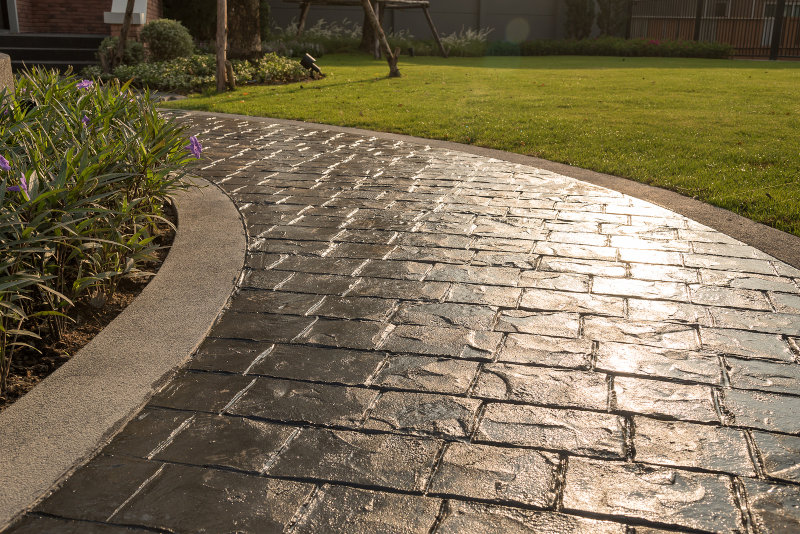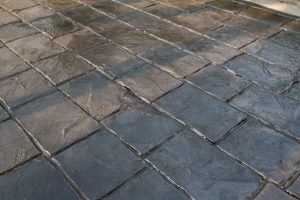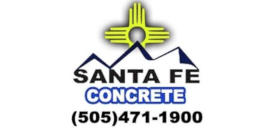Applying a Decorative Concrete Overlay to Your Cement Surfaces is Worth Considering to Beautify Your Home- Here’s How Part One
- admin
- Feb-08-2020
- stamped concrete
 A great way to bring some life back to both interior and exterior concrete is with stamped concrete overlays, especially when the costs of removing and replacing the concrete or current flooring it is out of your current budget. These stamped overlays don’t only look nice, but they require less time and labor. Concrete overlays also allow you to rejuvenate an area without the hassle of demolition or the fear of harming nearby structures and surfaces. What’s really cool about overlays is that it can mimic other paving materials as well, while saving the expense. There are several patterns of texturing skins and stamping mats that can give the feel and look of things such as brick, cobblestone, wood planking, slate, and natural stone, just to name a few.
A great way to bring some life back to both interior and exterior concrete is with stamped concrete overlays, especially when the costs of removing and replacing the concrete or current flooring it is out of your current budget. These stamped overlays don’t only look nice, but they require less time and labor. Concrete overlays also allow you to rejuvenate an area without the hassle of demolition or the fear of harming nearby structures and surfaces. What’s really cool about overlays is that it can mimic other paving materials as well, while saving the expense. There are several patterns of texturing skins and stamping mats that can give the feel and look of things such as brick, cobblestone, wood planking, slate, and natural stone, just to name a few.
There is a large variety of systems for overlays, so it is important to know what to expect from each one. There are single component options that only need you to add water to be ready to go. There are two-component systems that require some liquid polymer, and if you grab a three-component product, they will ask you to incorporate an additional ingredient, like sand or cement. Methods for these systems are not interchangeable.
Correct substrate establishment ensures peak performance, no matter which system you choose. Moisture levels, cracks in need of repair, and the concrete profile are all things that need to be considered. Shot Blasting is a mechanical profiling method that is highly recommended because the stamped overlays need to be thick enough to imprint. Some manufacturers suggest rotary scrubbing followed by an acid wash if sand blasting is not an available option. If you choose this method, it is crucial to neutralize the acid and pressure wash the area to get rid of all residual solution.
Preparing for a Stampable Overlay
You should never place a stampable overlay onto a raw concrete surface, just like any other resurfacing system. Most need a primer of slurry skim coat which will act as a bonding agent and keep the concrete substrate from absorbing moisture from the freshly placed overlay, which will cause it to quick set. There are technical data sheet recommendations for you to follow. Many of which, suggest that you allow the primer to dry until it is tack free, or dry to the touch. This will usually take about one to four hours depending on substrate and ambient temperatures. There are some, however, that warn you not to let your primer dry before you install your overlay. There are other variables as well, such as how many coats of primer you should use. Some systems require a coat the night before, some would like a coat 12 or 8 hours before installation, and another right before installing your overlay.
There are methods aside from primer, some overlays depend on pre-soaking the concrete so it is saturated, and then allow the surface to dry. You should use a sprinkler or a soaker hose for at least 4 hours, as many as 8 hours to achieve complete saturation. If you try to cheat this step and only mist the surface before you install your overlay, it can cause it to set before you can stamp it.
It is a very bad idea, however, to leave standing puddles of primer or water. You should use rags, a paint roller, or even a leaf blower to get rid of damp areas before you place your overlay.
